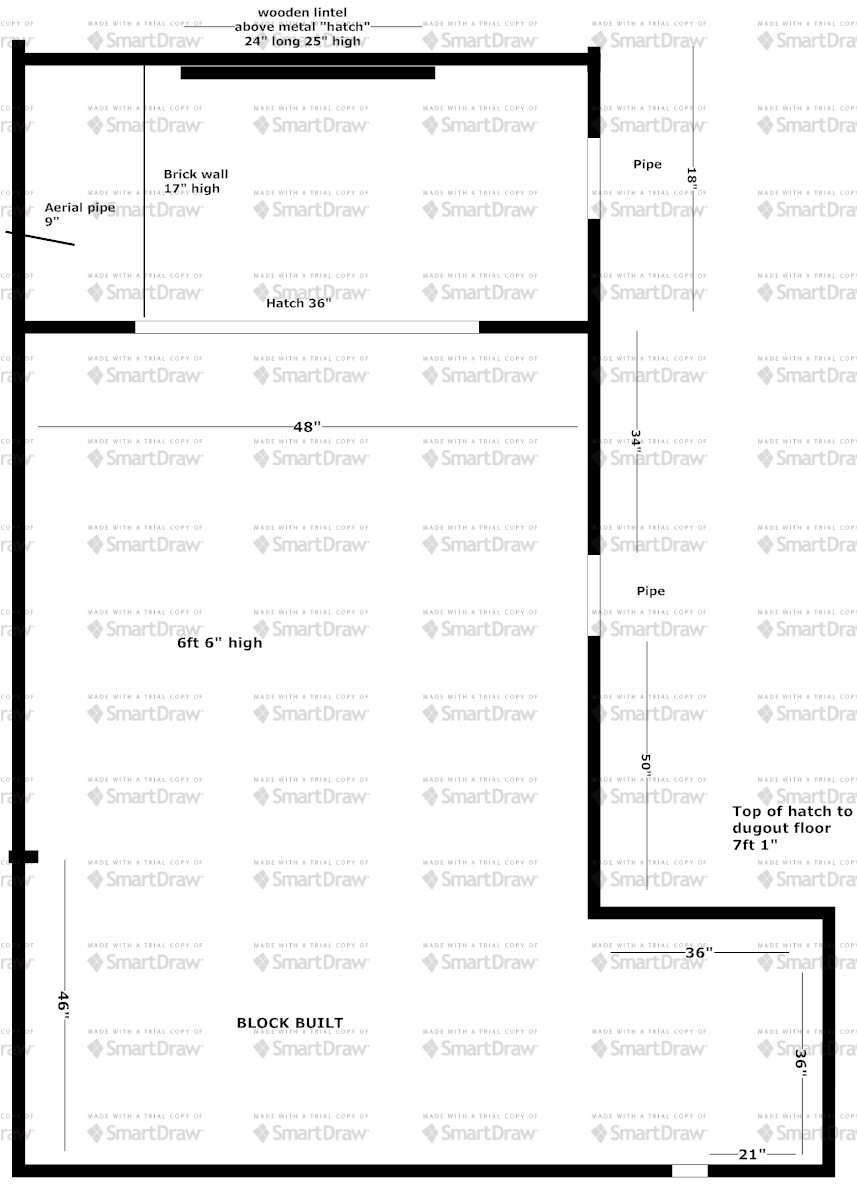| Role | Name | Posted from | Until |
|---|---|---|---|
| Operator | Mr Stanley Parsons | Unknown | 20 Jul 1944 |
Hemyock is now the largest village on the Blackdown Hills. Although located in Devon, the village is only around five miles from the Somerset town of Wellington.
Many details recorded by CART have been omitted from this report as some details may identify the site. The site is on PRIVATE LAND. NO ACCESS WOULD BE ALLOWED WITHOUT PERMISSION.
Today there is fairly dense Rhododendron cover but at the time the area was heavily wooded with larger trees that were mostly lost during the gales of 1987. One of these remaining tree stumps has evidence that the aerial cable would have run up the side. Another tree stump adjacent to the entrance had a cluster of four bent nails driven into it for an unknown purpose. They look to have been bent to hold something in place.
A hollow block entrance shaft drops 7 feet 1 inch down into a small rectangular entrance chamber which is directly connected to an Anderson shelter bunker placed at 90 degrees to the entrance. The shelter is set on 3 rows of hollow blocks. The dugout remains in good condition. It is slightly damp with a small amount of soil on the concrete floor. At the far end of the shelter there is a false end wall with a hatchway in the centre. Whitewashed at the top, it appears that there was a disguise (maybe shelves that have been known in other locations) on the end wall covering the opening. There could have been a hinged cover for the hatch. Two large Tee hinges with a black covering were found inside the dugout. There was a hook in the roof centrally which could have been used to hold the hatch cover up out of the way while the operator was working. A large vent in the end wall ran from the main chamber through the end compartment then stretched out before turning upwards. The exit of this could not be found. There was another vent on the floor to the right that appeared to go straight up. Both were made of glazed pipes. In the end wall of the false compartment was what appears to have been an escape tunnel. A square exit, with a wooden lintel above is sealed with a corrugated iron sheet and possible concrete backfill. Also in this section is a floor vent (to the right) and a metal pipe (likely for an aerial wire as appears above ground next to a tree stump) to the left, with a low brick wall which appeared more home built.
In the entrance shaft were the remains of the opening mechanism for the entrance hatch with pulleys and some wires still intact. They were very similar to diagrams produced at Coleshill showing a demonstration model. On entering the shaft there is a small recess in the blocks on the left housing a 4” glazed pipe that appears to rise up. No evidence of this could be found on the ground. This could have been of some use with the hatch mechanism. Two lead counterweights with fixing wires attached were found in each bottom (downhill) corner of the shaft. They were made from half ingots of lead. As a pair they were marked Broken Hill, Australia, BHAS (Broken Hill Associated Smelters).
The Foreman of the local dairy factory, Edgar Lowman was known to have helped the landowner in the gardens and also to have taken lessons in using wireless sets. He too could have had knowledge of the site and been involved, though this was never mentioned by him to his family.
The Kelly's Directory of 1939 records a Mrs Clara Cox residing in the village working as a radio dealer and repairs. She too could have been involved, especially supplying batteries, but this is unknown.
Hemyock Outstation
Arthur Gabbitas,
The kindness and great patience of the landowners.
Marion Churchill and Mike Cooper of Hemyock History Group. For tracking down the location
